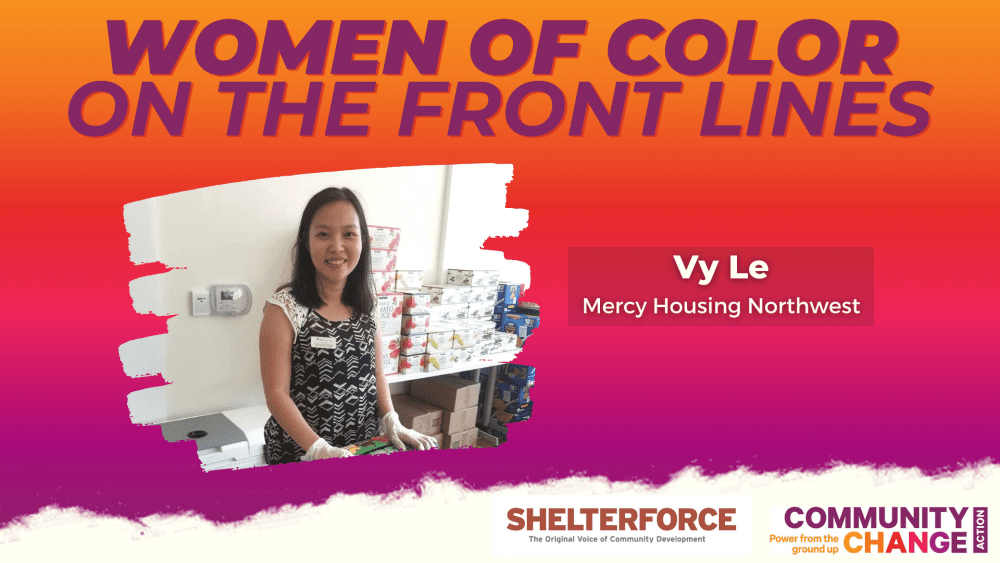It’s no secret: homeownership in America is in trouble. If this crucial part of the American Dream is worth saving—and it is—it’s also no secret how to start saving it.
Bear in mind that the current housing crisis hasn’t hit all Americans equally. U.S. homeownership rates are dropping across the board, but they are dropping faster for people of color. According to the Census Bureau, from 2005 to 2011, African American homeownership rates slid from 48.2 percent to 44.9 percent. Hispanics' and Asian/Pacific Islanders homeownership rates peaked in 2006 and slipped from 49.7 percent to 46.9 percent and from 60.8 percent to 58 percent, respectively. Non-Hispanic whites did better but still lost ground, dropping from 75.8 percent in 2006 to 73.8 percent in 2011.
A rentership society disproportionately consisting of people of color would be dangerous for our economy and society. Abundant research, including an analysis by the U.S. Department of Housing and Urban Development shows that homeownership can be an important means for building wealth and financial stability, particularly for low and moderate income families. It also gives them a better chance at having something to pass along to their kids. Renters miss out on these opportunities and typically have less to leave their children when they die.
A rentership society is not the America we envision. And it is not inevitable.
So what do we do about it? This past spring The Greenlining Institute brought together housing advocates, bankers, regulators and others in Los Angeles to brainstorm, and the session brought forth a number of ideas.
First, let’s stop blaming the victims. There has been much nonsense said and written that wrongly blames what Fox News host Neil Cavuto termed “loaning to minorities and risky folks.” Such formulations crudely shift the blame from those who created and engineered the housing bubble—and made piles of money off it—to those who were the victims of shady, predatory lending practices.
Instead, regulators should sound the alarm when housing bubbles are evident. Back in the ‘90s, Alan Greenspan famously warned of “irrational exuberance” as the tech bubble was taking off. Similar warnings should have been sounded on the housing bubble, and when the next bubble comes (as surely it will), the alarm bells should sound early and loud.
Second, let’s give those who were wronged a second chance. If you were the victim of a dishonest, predatory loan and lost your house, that event will blot your credit record for seven years. We know a great deal about what kinds of shady loans did the most damage, and their victims should get a chance to wipe the slate clean. With proper guidance and counseling, even those with poor credit can learn to repair their credit score, and this sort of assistance should be far more widely available than it now is.
While we’re at it, let’s create new credit scoring models that reflect reality. Major credit models now in use, like FICO, look at things like credit cards, mortgages and car loans, but not at many other bills that people pay every month, like rent and utilities. This means a big part of the picture is being missed. It also leaves immigrants and others who have had little credit at a steep disadvantage, even if they are 100 percent trustworthy and pay every single bill well before it’s due. In recent years, some organizations have started to look at ways to broaden credit scoring, but much more needs to be done.
Finally, let's look at new and sustainable ways to promote responsible homeownership. For example, a North Carolina-based project known as the Community Advantage Program (CAP) has had great success promoting sustainable lending to low and moderate-income communities. This program, described in an excellent recent book, Regaining the Dream, provided carefully underwritten, fixed-rate loans—without the tricks or surprises that marked the subprime bubble—to low- and moderate- income families. Borrowers were given counseling both to prepare them for homeownership and after purchase. It worked. People who traditionally would have been written off as unable to buy a home not only became homeowners, they kept up with their payments, built equity, and started down the path to a prosperous future.
Another model worth exploring and expanding is Boston Community Capital’s Stabilizing Urban Neighborhoods (SUN) initiative (see Shelterforce's winter 2011 Q&A with BCC director Elyse Cherry). SUN has thus far prevented the eviction of 150 Massachusetts families on the brink of foreclosure by working with banks and attorneys to stop the eviction process, purchase foreclosed properties at current market values, and resell those properties to their current occupants at a significant discount off the prior mortgage value.
These are just a few of the worthwhile ideas that are out there. We'll be putting together a more complete agenda and circulating it over the summer, but the bottom line is simple: We don't need to be a society of renters. We can keep the dream of homeownership within reach of most Americans and do it responsibly. But it's not going to happen by itself. We need to work to make it happen.




Comments